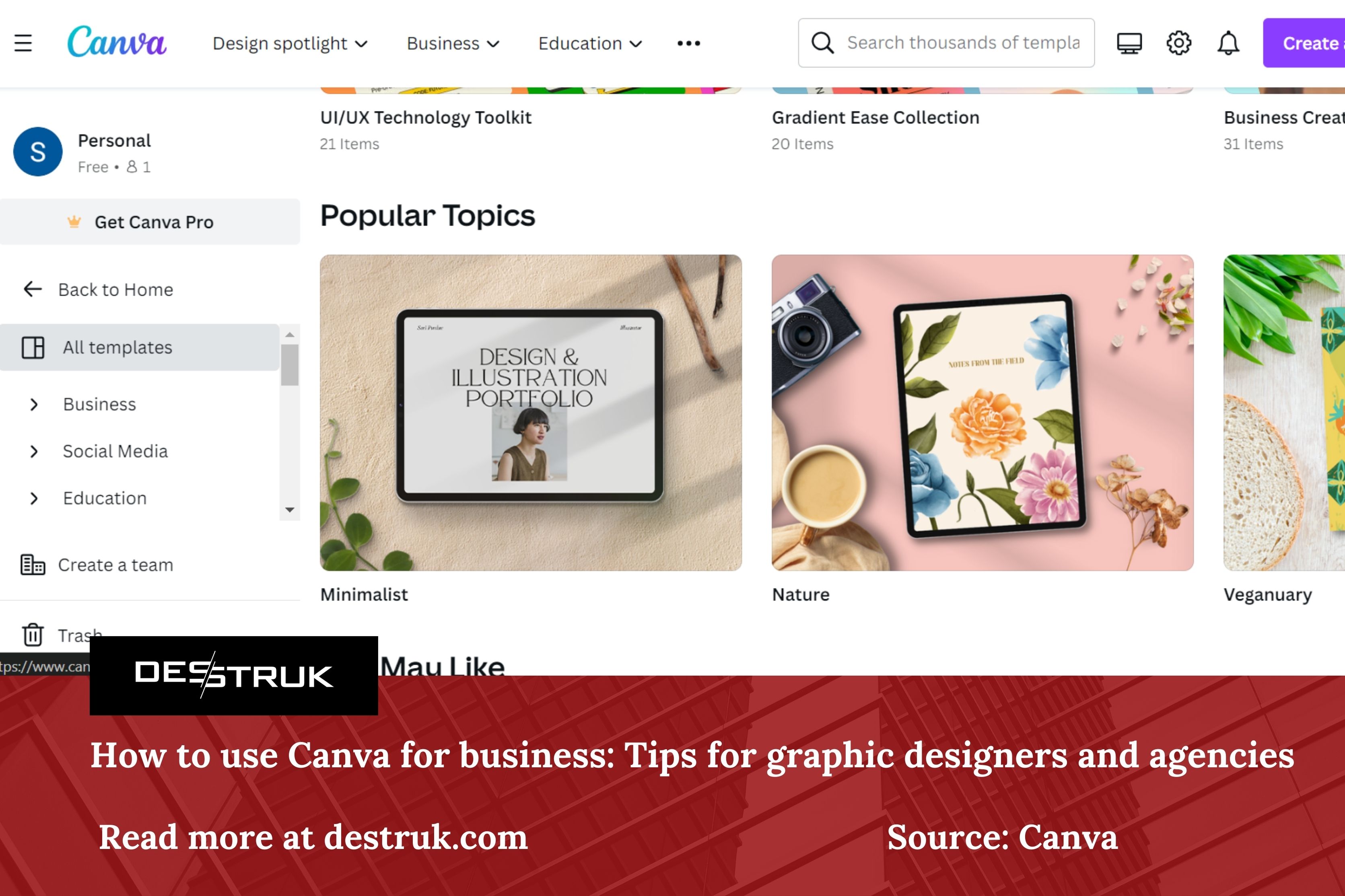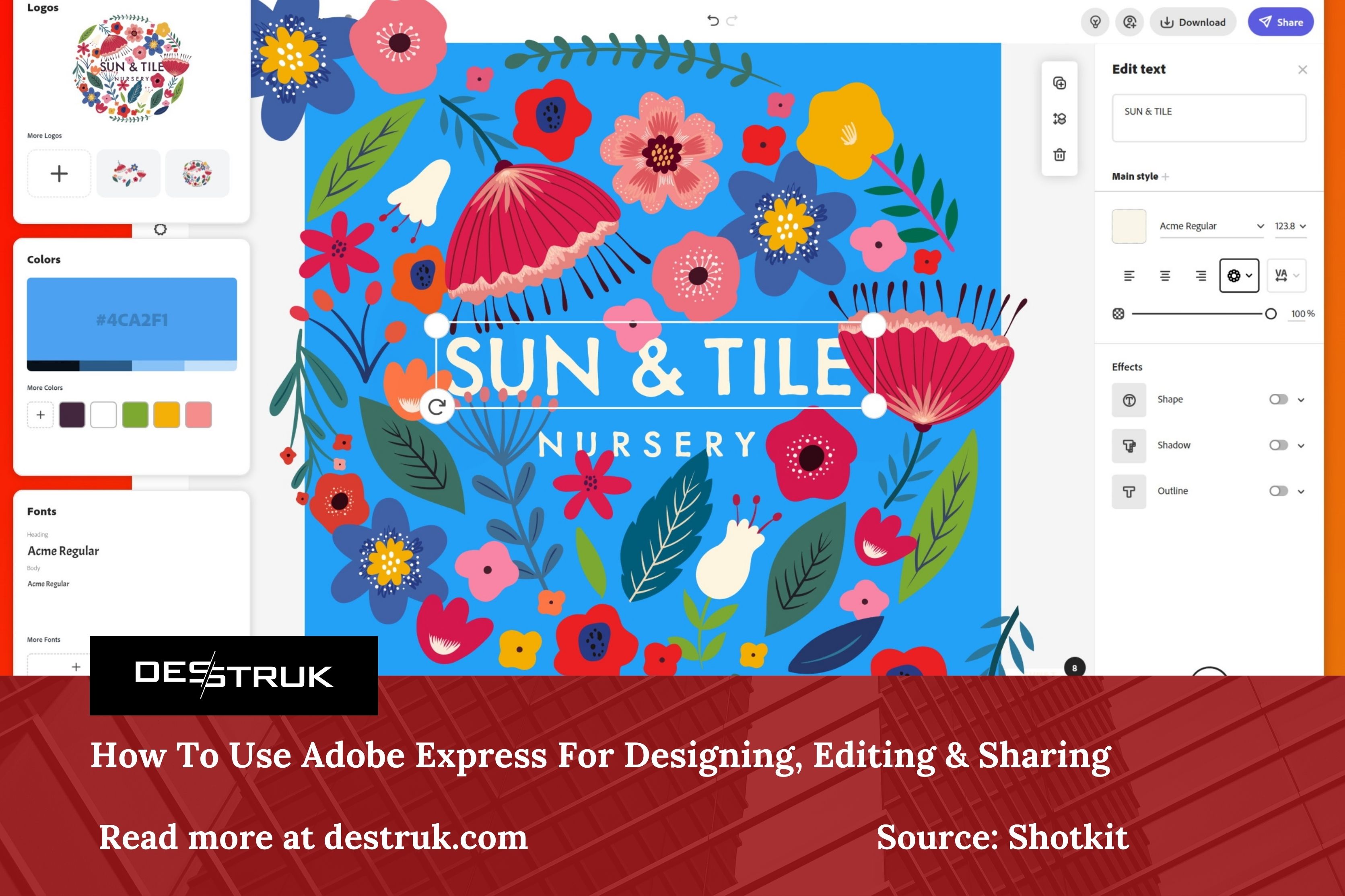Graphic designers aren’t the only ones who dedicate significant time to designing and publishing content of all kinds. Recent HubSpot data showed that 66% of marketers expect their content marketing budget to increase(opens in a new tab or window), and 90% of those using content marketing plan to continue doing so.
Now more than ever, B2B and B2C marketers are facing increased pressure to create a wide range of visuals to convey their marketing messages. The number of documents(opens in a new tab or window) now expected to be professionally designed and look on-brand has increased exponentially.
Previously, a sales letter was rarely more than a text-heavy document on company letterhead. Now, the same salesperson is expected to create visually exciting, custom presentations tailored to every prospect they pitch to.
Social media marketing teams are expected to post on-brand, designed social posts on every platform, including text-based, video(opens in a new tab or window), and photo-based formats. Feed posts and stories need to be designed, scheduled, and published(opens in a new tab or window) daily.
Entrepreneurs need pitch decks updated with the latest stats to win investment or clients, and they can’t just be made in the PowerPoint default (boring!) template — and everything they publish or share needs to be on brand.
We’re in a new world of visual design: because digital design tools like Canva have made design more accessible than ever, our collective expectations have exploded. This has also led to design agencies getting to grow their businesses and provide design services to individuals and companies everywhere — because every industry can benefit from more efficient design that sticks to your brand(opens in a new tab or window).
Whether you’re an agency designer or you’re in-house at a company, Canva Pro(opens in a new tab or window) and Canva for Teams(opens in a new tab or window) facilitate a quick, easy, enjoyable design process that lets any employee create beautiful content within your brand parameters — whether or not they’ve got design experience.
Table of Contents
The Story of Canva Pro and Canva for Teams
In 2015, we officially launched Canva for Work (now Canva Pro), a new platform built specifically for businesses. Since then, we’ve expanded its capabilities even further, and taken feedback from companies of all sizes using Canva. In 2022(opens in a new tab or window), it became clear that the new world we live in necessitates next-level collaboration and team management tools for companies, so we launched Canva for Teams(opens in a new tab or window) — the perfect platform for teams of 2 or 2,000.
Canva Pro is for individual professionals, while Canva for Teams is for teams of two to thousands of people. While both options unlock premium features, Canva for Teams includes features especially designed for those working in a team, such as collaboration features to help increase design capacity or improve workflows(opens in a new tab or window).
How to Use Canva for Business
Canva Pro and Canva for Teams can greatly benefit large in-house marketing and design teams at major companies, independent small businesses(opens in a new tab or window) with small marketing teams, as well as design agencies working with clients of all types. We’ll cover the ways that all these groups can make use of this all-in-one design platform.
Canva for in-house design and marketing teams of all sizes:
At large or small companies, in-house design teams are often absolutely overloaded with work. Requests for their design skills to be used to perfect a pitch desk, create social posts for a campaign, add the right header image to blog articles, design a product’s packaging, and design a whole new product page come rolling in, day after day. But they don’t really need to be burdened with all of these requests: some would be easily taken care of by empowering every employee with Canva for Teams(opens in a new tab or window), a Brand Kit(opens in a new tab or window), and some beautiful branded templates(opens in a new tab or window).
Here’s how to ensure your design team’s resources are properly allocated by taking the small stuff off their plate.
1. Establish your design and visual source of truth with Brand Kits and Branded Templates
Nearly half of marketers say that templates are their top strategy(opens in a new tab or window) for hitting their content goals. Working with your design team, set your brand parameters, create your company’s Brand Kit(opens in a new tab or window) (or several of them for different campaigns and product lines), and design and save branded templates(opens in a new tab or window) with locked elements(opens in a new tab or window) for everyone to use. Then, every employee can create on-brand, beautiful presentations, social posts, whitepagers, project proposals(opens in a new tab or window), and much more.
Here’s more on how to build a Brand Kit:
And take a minute to get to know Branded Templates, too:
2. Invite the rest of your team
Once your design parameters are ready, it’s time to loop in the rest of the team. Everyone who designs anything — from pitch decks to product packages to to social posts — can be invited to your Canva team(opens in a new tab or window) and start designing in minutes.
Learn how to create a team in Canva:
3. Run a training session and onboard employees to Canva
Once your team has access to the platform, schedule some training sessions to show them how easy-to-use the platform really is. Use Canva tutorial videos(opens in a new tab or window) to show your whole team the creativity-boosting, time-saving functionalities that Canva provides for your team(opens in a new tab or window).
Demonstrate how to collaborate on designs, how to remove backgrounds(opens in a new tab or window) and use Magic Switch(opens in a new tab or window), how to provide and receive comments and feedback, and how to use your company brand kit and branded templates. Show them how quick it is to design in Canva as opposed to starting from scratch.
4. Start designing and enjoy on-brand content, live collaboration, and a reduction in versions
Now, your team is ready to get designing on Canva — no matter if they’re working together in the same room, or seven time zones away.
Canva for Teams is built for live collaboration, no matter where you’re working. And that means design approvals(opens in a new tab or window), feedback, and implementation can all happen in real-time, cutting down on communication issues(opens in a new tab or window) and reducing the need for meeting after meeting and version after version. It makes brand management(opens in a new tab or window) easier than ever, even for huge companies with hundreds (or thousands) of employees creating content.
Canva for independent designers and agencies
Design agencies exist to help businesses of all sizes level up their branding and visual design efforts right away, without having to hire an entire design team. They’re game-changers for small businesses of all kinds, who need support on projects like logo creation, social header images, and holistic visual brand planning, as well as daily design work for social media posts, flyers, and blogs.
These businesses don’t have the time or financial resources to do all of this work themselves, so agencies can step in and take this important work off their plate. Agencies can use Canva to set their clients up for design success every time.
Furthermore, tools like Canva can help improve your agency’s utilization rate(opens in a new tab or window) by maximizing productivity and efficiency.
1. Get new clients by offering Brand Kit services
Canva Pro empowers business owners and designers to create beautiful designs from templates and a Brand Kit(opens in a new tab or window), which serves the same purpose that a style guide would in professional design.

As a designer, a great service to offer clients is a Canva Brand Kit Package. It can include a beautiful, well-crafted logo, a set of branded backgrounds, a color palette, and font palette which articulates their brand — and you can go as far as building all these parameters into the company’s Canva instance.
For the client, this is a great investment because it sets every employee up to create on-brand designs on a daily basis, and it takes the small tasks off your design team’s plate.
2. Design team templates everyone in the client’s organization can use
High-pressure design deadlines are stressful for both designers and marketers, yet in most workplaces, they happen on a daily basis. In order to offset this pressure, agencies can also offer an even more robust Canva Branding package to their clients, including consistent brand templates(opens in a new tab or window) made for the client’s most commonly used visual documents and types of content.
Agencies can also offer tailored packages that clients can mix and match: for example, a Presentation Package that includes branded backgrounds, branded presentation cover page templates, and several variations for inside pages. Not only will your clients love it, as their presentations will look professional and on-brand, but you won’t have to worry about going backwards and forwards making endless text tweaks and variations — they can do it themselves!




Take a look through the Blue and Yellow Creative Brand Presentation template(opens in a new tab or window) for inspiration.
Same goes for teams that are leaning in hard on social: design branded social templates for every platform, and for various campaigns, with a Social Templates package.
Consider offering the ability to bundle these types of packages with the above Brand Kit services and you’ve got a menu of options that significantly improve day-to-day life for the company’s employees — both their designers and their other employees tasked with design projects.
3. Build long-term relationships by holding design workshops to educate your clients
Sharing basic skills with your clients through paid workshops is an additional revenue stream that many agencies are trying out. Showing a client’s marketing team how they can use the Canva templates and Brand Kit you built helps them get the most use out of your hard work — meaning they’ll be even more satisfied with your services, engaging you time and time again and recommending you to colleagues.
There’s no limits to the applications of good graphic design. Every channel where your client connects with the world outside their company is an opportunity to convey their brand personality. Here are some commonly used documents you could focus on in incremental design workshops aimed to improve the skills of your clients:
Educating your clients on what they can do with great graphic content will not only provide more opportunities for you to win more business, but can dramatically help your client’s business to succeed in this new era.
4. Spend less time copy editing and more time designing
Back in the days before design platforms made for real-time collaboration, small mistakes like a missing apostrophe or a misspelled word caused hours of wasted time because designers had to send JPG files back and forth between them and their client. Canva allows designers to spend more time designing and less time copy editing by enabling clients to make these small copy revisions themselves.
With a platform that’s completely online and collaborative(opens in a new tab or window), your clients can access and edit the design through their account or through an editable link.

5. Use the magic switch feature to repurpose your designs for a number of platforms
So much of a designer’s time can be wasted making the near-infinite dimension changes needed to customize a design to suit the various formats it’s needed for. Instagram stories are one size, Facebook feed posts are another, and printable posters are yet another set of dimensions. Not only do designers need to work with the correct file dimensions and sizes, but they also need to shift around text, design elements, and photos or illustrations to better fit each format. It’s not fun or creative work — it’s one of the most tedious parts of design work.
Luckily, Canva Pro’s beloved Magic Switch(opens in a new tab or window) feature allows you to make these changes instantly, without the hassle of manual dimension variations, which can save designers hours each week.
After you’ve created a design for a client with Canva Pro you can select to convert its dimensions individually to fit the format you need — or, with the Magic Switch tool, you can convert it in bulk to fit a number of different formats (social media posts, documents, marketing materials, and more.) All of your newly formatted designs will open up in new web browser tabs for you to save and use.
Canva helps businesses tell their visual stories every day
These days, content is king. Businesses are expected not only to produce their products and sell their services, but to tell the right stories and look great while doing it. That means developing a strong, recognisable brand, growing your community and gaining their trust through blogs and social media, and making sure everything you produce — from presentations to product packaging — represents your brand in the best light.
Canva can help you do it all, more efficiently than ever(opens in a new tab or window).
Learn more about Canva Pro and Canva for Teams(opens in a new tab or window), and start engaging your community with powerful visuals today.





